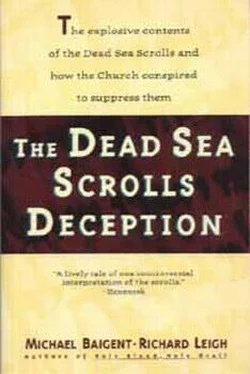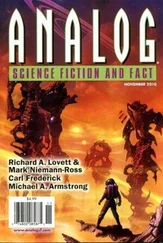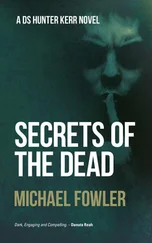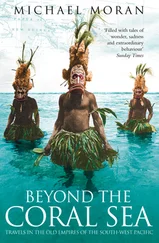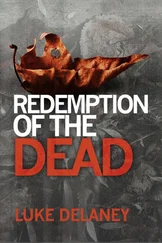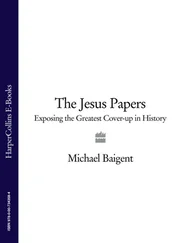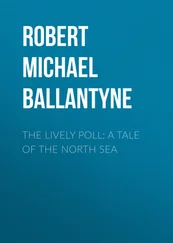Roland de Vaux was born in Paris in 1903 and studied for the priesthood between 1925 and 1928 at the seminary of Saint Sulpice, learning Arabic and Aramaic in the process. In 1929, he joined the Dominican Order, under whose auspices he was sent to the Ecole Biblique in Jerusalem. He began teaching regularly at the Ecole in 1934 and served as its director from 1945 until 1965. Between 1938 and 1953, he edited the Ecole’s magazine, Revue biblique.
To those who met or knew him, de Vaux was a striking and memorable personality, something of a ‘character’. A heavy smoker, he wore a bushy beard, glasses and a dark beret. He also, invariably, wore his white monk’s robes, even on excavations. A charismatic man, known for his vigour and enthusiasm, he was an eloquent lecturer and an engaging raconteur, with a flair for public relations. This made him an ideal spokesman for the enterprise on which he was engaged. One of his former colleagues described him to us as a good scholar, if not a particularly good archaeologist.
But behind his personable façade, de Vaux was ruthless, narrow-minded, bigoted and fiercely vindictive. Politically, he was decidedly right-wing. In his youth, he had been a member of Action Franchise, the militant Catholic and nationalist movement which burgeoned in France between the two world wars, which extolled the cult of ‘blood and soil’ and expressed more than a little sympathy for the dictatorships in Germany, Italy and, on Franco’s triumph, Spain.
Certainly he was ill-suited to preside over research on the Dead Sea Scrolls. In the first place, he was not just a practising Catholic, but also a monk, and this could hardly conduce to balance or impartiality in his handling of extremely sensitive, even explosive, religious material. Moreover, he was hostile to Israel as a political entity, always referring to the country as ‘Palestine’. On a more personal level, he was also anti-Semitic. One of his former colleagues testifies to his resentment at Israelis attending his lectures. After interviewing de Vaux, David Pryce-Jones stated that ‘I found him an irascible brute, slightly potty too.’ 4According to Magen Broshi, currently director of the Israeli Shrine of the Book, ‘de Vaux was a rabid anti-Semite and a rabid anti-Israeli — but was the best partner one could ask for’. 5
This was the man, then, to whom responsibility for the Dead Sea Scrolls was entrusted. In 1953, the board of trustees of the Rockefeller Museum, whose president at the time was de Vaux himself, had requested nominations from the various foreign archaeological schools — British, French, German and American — then active in Jerusalem. No Israelis were invited, despite the proximity of the well-trained staff of Hebrew University. Each school was asked for funds to help sustain the cost of the work.
The first scholar to be appointed under de Vaux’s authority was Professor Frank Cross, then associated with McCormick Theological Seminary in Chicago and with the Albright Institute in Jerusalem. Cross was the Albright’s nominee, and began to work in Jerusalem in the summer of 1953. The material assigned to him consisted of specifically biblical texts — scroll commentaries, that is, found in Cave 4 at Qumran, on the various books of the Old Testament.
Material of a similar nature was assigned to Monsignor Patrick Skehan, also from the United States. At the time of his appointment, he was director of the Albright Institute.
Father Jean Starcky, from France, was nominated by the Ecole Biblique. At the time, he was attached to the Centre Nationale de la Recherche Scientifique. Starcky, an expert in Aramaic, was assigned the corpus of material in that language.
Dr Claus-Hunno Hunzinger was nominated by the Germans. He was assigned one particular text, known as the ‘War Scroll’, as well as a body of material transcribed on papyrus rather than on parchment. He subsequently left the team and was eventually replaced by another French priest, Father Maurice Baillet.
Father Josef Milik, a Polish priest resettled in France, was another nominee of the Ecole Biblique, with which he was also affiliated. A disciple and close confidant of de Vaux, Milik received an especially important corpus of material. It included a quantity of Old Testament apocrypha. It also included ‘pseudepigraphical’ writings — texts in which a later commentator would try to impart authority to his words by ascribing them to earlier prophets and patriarchs. Most important of all, it included what was called ‘sectarian material’ — material pertaining specifically to the community at Qumran, their teachings, rituals and disciplines.
The British nominee to the team was John M. Allegro, then working for his doctorate at Oxford under Professor Godfrey R. Driver. Allegro went to Jerusalem as an agnostic. He was the only member of the team not to have specific religious affiliations. He was also the only philologist in the group and already had five publications to his credit in academic journals. He was thus the only one to have established a reputation for himself before working on the scrolls. All the others were unknown at the time, and made their names only through their work with the texts assigned them.
Allegro was assigned biblical commentaries (which proved in fact to be ‘sectarian material’ of the kind assigned to Milik) and a body of so-called ‘wisdom literature’ — hymns, psalms, sermons and exhortations of a moral and poetic character. Allegro’s material seems to have been rather more explosive than anyone at the time had anticipated, and he himself was something of a maverick. He had, certainly, no compunction about breaking the ‘consensus’ de Vaux was trying to establish and, as we shall see, was soon to be ousted from the team and replaced by John Strugnell, also enrolled in a doctoral programme at Oxford. Strugnell became a disciple of Frank Cross.
According to what principles was the material divided, distributed and assigned? How was it determined who would deal with what? Professor Cross, when asked this question on the telephone, replied that the matter was resolved with ‘discussion and easy consensus and with the blessing of de Vaux’:
Certain things were obvious; those of us who had full-time professorships could not take unknown and more complex problems. So we took biblical, the simplest material from the point of view of identification of material and putting stuff into columns and what-not. The people who were specialists in Aramaic, particularly Starcky — obviously the Aramaic stuff went to him. The interests of the several scholars, the opportunities for research, pretty much laid out what each of us would do. This was quickly agreed to and de Vaux gave his blessing. We didn’t sit down and vote and there was no conflict in this. Basically the team worked by consensus. 6
Professor Cross makes it clear that each member of the team knew what all the others were doing. All the material had been laid out and arranged in a single room, the ‘Scrollery’, and anyone was free to wander about and see how his colleagues were progressing. [1] ‘Scrollery’ was a large room containing some twenty trestle tables where scroll fragments were pressed under sheets of glass. Photographs dating from the 1950s show a complete and appalling lack of any environmental control for the material, much of which was already deteriorating. Windows are open, for example, curtains blowing in the breeze. No attempt has been made to exclude heat, humidity, wind, dust or direct sunlight. It is all a far cry from the conditions in which the scrolls are housed today. They are now in a basement room, under a special amber light. Temperature and humidity are rigorously controlled. Each fragment is held between sheets of thin silk stretched in perspex frames.
They would also, of course, help one another on problems requiring one or another individual’s special expertise. But this also meant that if any one of the team were dealing with controversial or explosive material, all the others would know. On this basis, Allegro, to the end of his life, was to insist that important and controversial material was being withheld, or at least delayed in its release, by his colleagues. Another independent-minded scholar who later became involved reports that he was in the 1960s instructed ‘to go slow’, to proceed in a deliberately desultory fashion ‘so that the crazies will get tired and go away’. 7De Vaux wanted, so far as it was possible, to avoid embarrassing the Christian establishment. Some of the Qumran material was clearly deemed capable of doing precisely that.
Читать дальше
